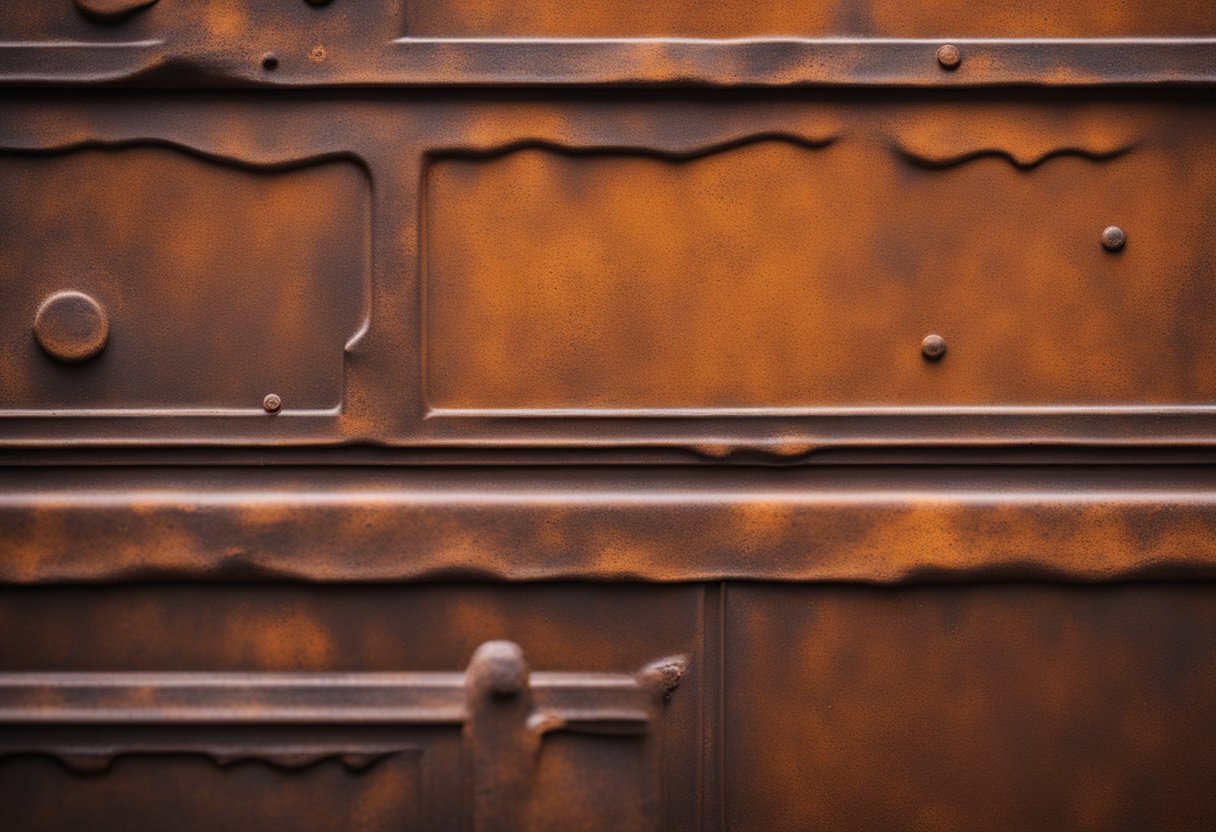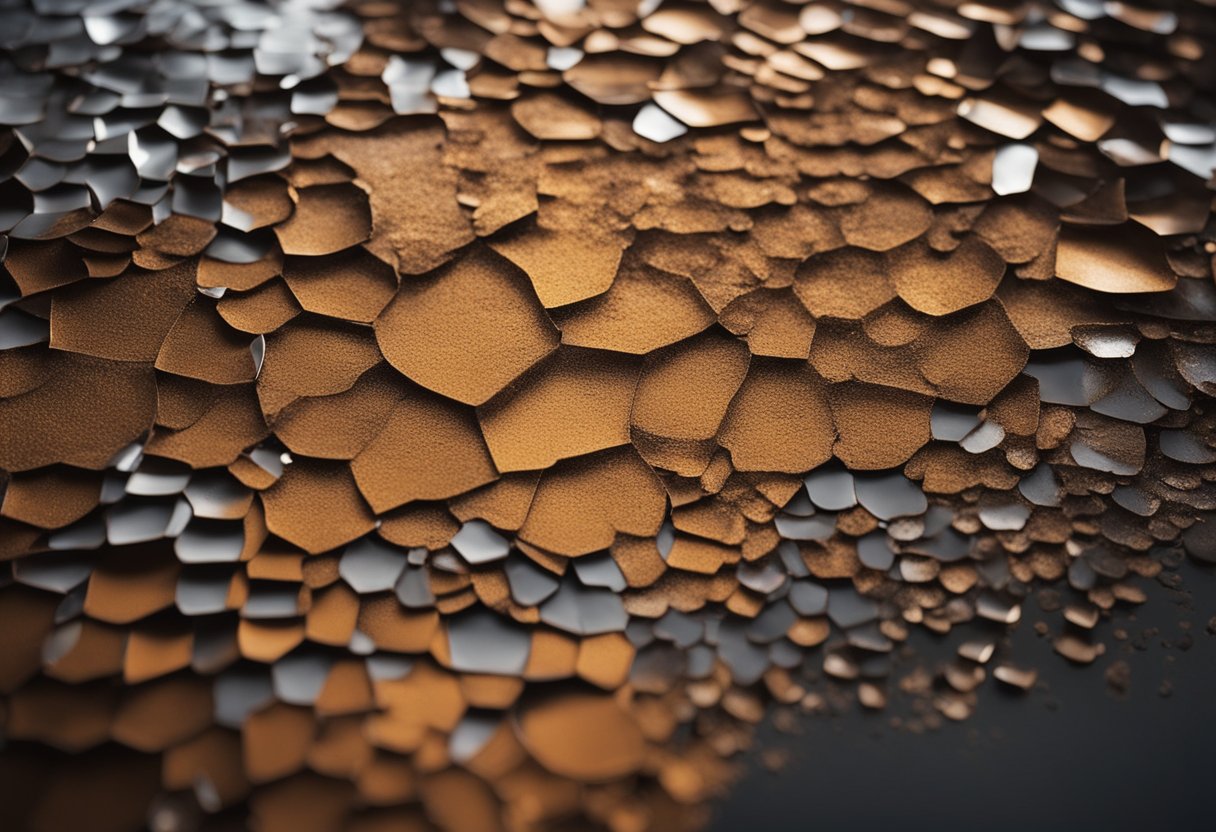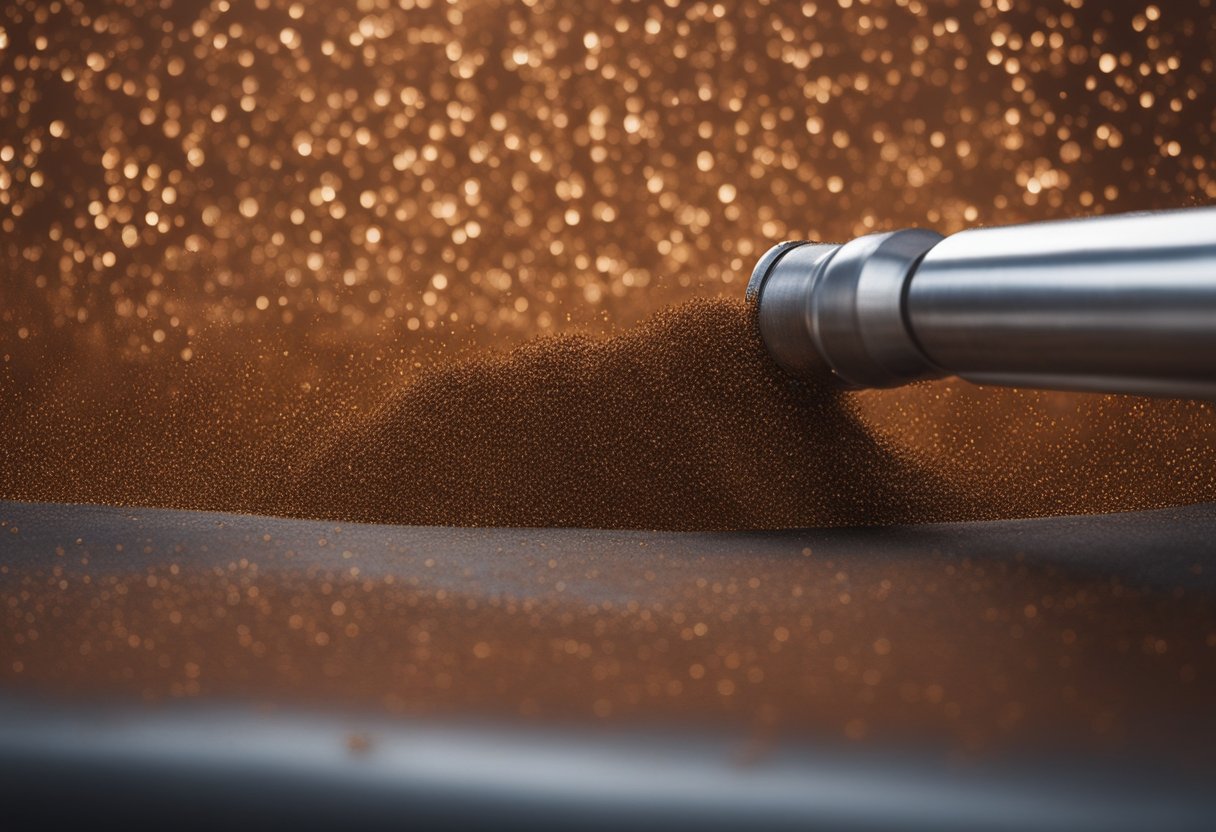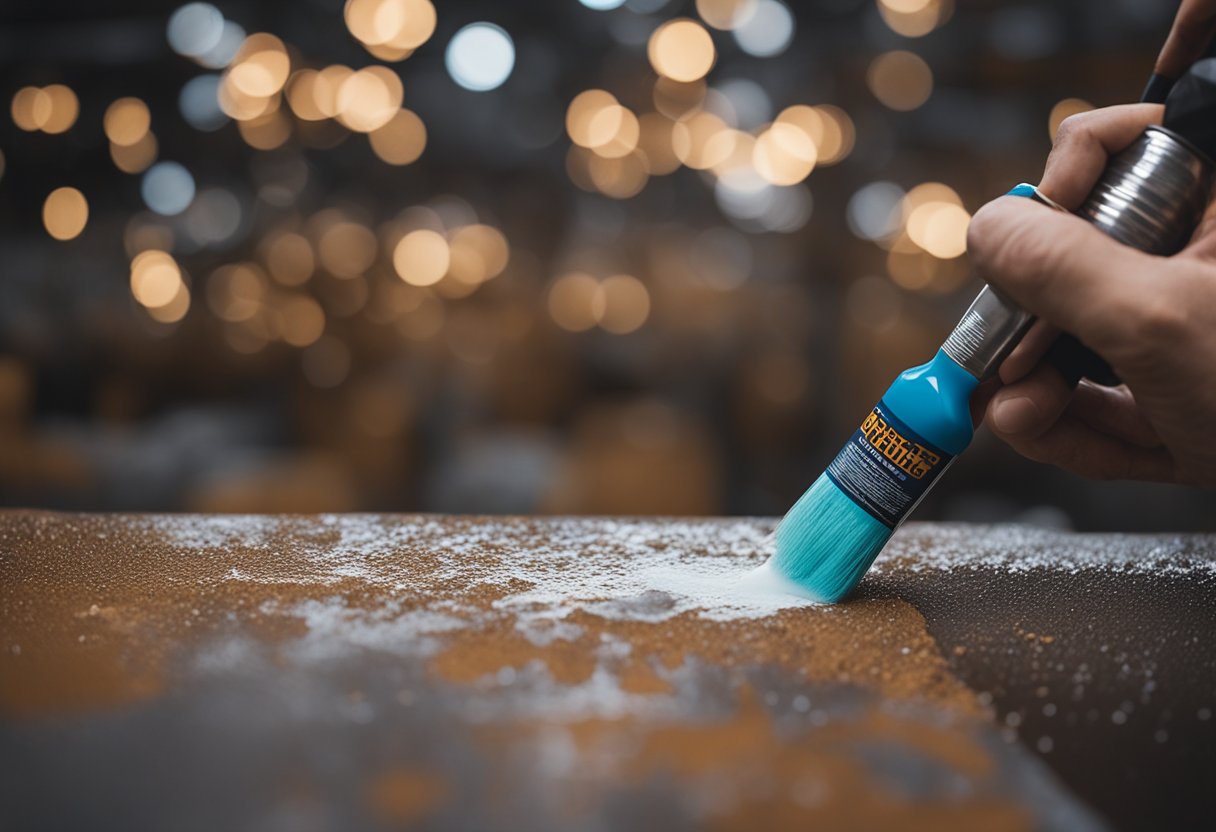Self-etch primer is a type of primer that is designed to etch and prime metal surfaces in one step. It is an excellent choice for preparing bare metal, aluminum, and fiberglass surfaces for painting. However, one of the most common questions about self-etch primer is whether it can be used over rust. In this article, I will explore the use of self-etch primer over rust and provide some tips on how to achieve the best results.
Rust is a common problem that affects metal surfaces. It can be caused by exposure to moisture, oxygen, and other environmental factors. Rust can weaken metal surfaces and make them more susceptible to damage. If you are planning to paint over a rusty metal surface, it is important to prepare the surface properly to ensure that the paint adheres well and the rust does not continue to spread. One option is to use a self-etch primer over the rust to create a smooth, corrosion-resistant surface for the topcoat.
Key Takeaways
- Self-etch primer can be used over rust to create a smooth, corrosion-resistant surface for the topcoat.
- Proper preparation and application of self-etch primer is essential for achieving the best results.
- Self-etch primer has some benefits and limitations, and it is important to follow safety precautions when using it.
Understanding Self Etch Primer
https://www.youtube.com/watch?v=lrA0APmEpOA&embed=true
As a professional in the auto body industry, I know that using the right primer is essential in ensuring a smooth and long-lasting finish. One type of primer that I often use is self etch primer, also known as etch primer or self-etching primer.
Self etch primer is a type of primer that is specifically designed to be used on bare metal surfaces, including aluminum, steel, and other metals. It contains an acid that chemically etches the metal surface, creating a strong bond between the metal and the primer. This bond helps to prevent corrosion and rust from forming on the metal surface, which can lead to paint failure over time.
One of the benefits of using self etch primer is that it can be used on both new and old metal surfaces. When used on new metal surfaces, it helps to promote adhesion between the metal and the primer, which can help to improve the overall durability of the finish. When used on old metal surfaces, it can help to remove any rust or corrosion that may be present, which can help to prevent further damage to the metal.
Self etch primer is also available in both aerosol and spray gun formulations, making it easy to apply to any surface. It is recommended to apply two coats of self etch primer to ensure maximum adhesion between the metal and the primer.
Overall, self etch primer is a great choice for anyone looking to achieve a high-quality, long-lasting finish on their metal surfaces. Its ability to chemically bond with the metal surface helps to prevent rust and corrosion, which can help to prolong the life of the finish.
Preparation and Application
https://www.youtube.com/watch?v=EXJgCyShOCw&embed=true
Surface Preparation
Before applying self-etch primer over rust, proper surface preparation is essential to ensure maximum adhesion and longevity of the coating. Begin by sanding the surface with #400 grit wet or dry sandpaper to remove any loose rust, dirt, oil, grease, or wax. For bare metal, aluminum, and fiberglass surfaces, it is recommended to use a wire wheel to remove any remaining debris.
After the surface is clean and free of debris, apply a rust converter to convert any remaining rust into a stable surface that can be painted over. Rust converters work by chemically converting rust into a black, stable surface that can be painted over with a self-etch primer. Once the rust converter has dried, sand the surface again with #400 grit wet or dry sandpaper to remove any remaining rust converter residue.
Application Process
When applying self-etch primer over rust, it is important to follow the manufacturer’s instructions carefully. Begin by shaking the can thoroughly to ensure that the primer is properly mixed. Next, test the spray on a small, inconspicuous area to ensure proper adhesion and compatibility with the surface.
When spraying the self-etch primer, hold the can approximately 10-12 inches away from the surface and apply in a sweeping motion. Apply a light, even coat and allow to dry for the recommended time before applying additional coats. It is recommended to apply at least two coats of self-etch primer to ensure proper coverage and adhesion.
After the final coat has been applied, allow the self-etch primer to dry completely before applying a topcoat. If necessary, sand the surface lightly with #400 grit wet or dry sandpaper to ensure proper adhesion of the topcoat. It is recommended to use a topcoat that is compatible with the self-etch primer to ensure maximum adhesion and longevity of the coating.
In summary, proper surface preparation is essential when applying self-etch primer over rust. Sand the surface with #400 grit wet or dry sandpaper, apply a rust converter, and follow the manufacturer’s instructions carefully when applying the self-etch primer. Apply at least two coats of self-etch primer and allow to dry completely before applying a topcoat.
Self Etch Primer and Rust
https://www.youtube.com/watch?v=IlpEJD_aTKs&embed=true
When it comes to painting over rust, it is important to use the right type of primer to ensure proper adhesion and long-lasting protection. Self-etch primer is a popular choice for many DIYers and professionals alike, but can it be used on rusted metal surfaces?
The short answer is yes, self-etch primer can be used on rusted metal surfaces, but it is important to properly prepare the surface before applying the primer. Rust and corrosion can weaken the metal and prevent proper adhesion, so it is important to remove as much rust as possible before applying the primer.
One way to remove rust is by using a rust converter, such as Rust-Oleum Rust Converter. This product chemically converts rust into a stable compound, which can then be painted over. However, it is important to note that not all primers are compatible with rust converters. According to On Secret Hunt, oil-based primers can be applied over rust converters, but are not required.
Another option is to use a rusty metal primer, such as Rust-Oleum Rusty Metal Primer. This type of primer is specifically designed to adhere to rusty metal surfaces and provide corrosion resistance. However, it is important to note that rusty metal primer is not the same as self-etch primer. Rusty metal primer is a good choice for heavily rusted surfaces, but may not be necessary for surfaces with minimal rust.
In summary, self-etch primer can be used on rusted metal surfaces, but proper surface preparation is key. Removing as much rust as possible and using a compatible primer, such as a rust converter or rusty metal primer, can help ensure proper adhesion and long-lasting protection against corrosion.
Priming and Top Coating
https://www.youtube.com/watch?v=h3MHoD9QlZQ&embed=true
When it comes to painting over rust, using a self-etching primer is the best way to ensure that your topcoat adheres properly to the surface. Self-etching primers contain chemicals that etch into the metal surface, creating a strong bond between the primer and the metal. This bond helps to prevent the topcoat from peeling or flaking off over time.
Before applying the self-etching primer, it’s important to clean the surface thoroughly. Use a wire brush or sandpaper to remove any loose rust or paint, and then wipe down the surface with a clean, dry cloth. If the surface is heavily rusted, you may need to use a rust converter to treat the rust before applying the self-etching primer.
Once the surface is clean and dry, you can apply the self-etching primer using a spray can or a spray gun. Be sure to follow the manufacturer’s instructions carefully, and wear protective gear such as a respirator and gloves.
After the self-etching primer has dried, you can apply your topcoat. Automotive paint is a good choice for painting over rust, as it is designed to withstand the harsh conditions of the road. You can apply the automotive paint using a spray can or a spray gun, depending on the size of the surface you are painting.
When choosing a color for your topcoat, keep in mind that darker colors may show imperfections in the surface more easily than lighter colors. If you are painting a large surface, such as a car or a boat, you may want to consider using a spray gun for a more even and professional finish.
In conclusion, priming and top coating over rust requires careful preparation and attention to detail. By using a self-etching primer and high-quality automotive paint, you can ensure that your topcoat adheres properly and looks great for years to come.
Drying and Curing
https://www.youtube.com/watch?v=e2lkivgV26o&embed=true
After applying self etch primer over rust, it is essential to allow enough time for the primer to dry and cure before proceeding with further steps. The drying and curing time of self etch primer depends on various factors such as humidity, temperature, and the thickness of the coating.
Typically, self etch primer dries to the touch within 30 minutes to an hour. However, it is essential to note that drying time does not mean the primer has cured. The curing process takes longer, and it is crucial to allow enough time for the primer to cure before proceeding with the next step.
The curing time of self etch primer is typically 24 hours, but it can vary depending on the manufacturer’s instructions. It is essential to follow the manufacturer’s instructions for the best results.
It is also important to note that the self etch primer should not be handled or sanded until it has completely dried and cured. Handling the primer before it has dried can result in fingerprints and smudges, ruining the finish. Similarly, sanding the primer before it has cured can lead to uneven surfaces and poor adhesion of the topcoat.
To summarize, allowing enough time for self etch primer to dry and cure is crucial for achieving a smooth and durable finish. The drying and curing time can vary depending on various factors, and it is essential to follow the manufacturer’s instructions for the best results.
Benefits and Limitations
Self-etching primer is a popular choice for those looking to paint over rusted metal surfaces. As someone who has used this type of primer on several occasions, I can attest to its effectiveness at promoting adhesion between the paint and the metal surface.
One of the main benefits of self-etch primer is its ability to create a strong bond with the metal surface. This is achieved through the primer’s chemical composition, which allows it to etch into the metal and create a rough surface that the paint can adhere to. This maximum adhesion is crucial for ensuring that the paint does not lift or peel off the surface over time.
Another benefit of self-etch primer is its ability to provide protection against future rusting. The primer creates a barrier between the metal and the environment, preventing moisture and other corrosive elements from reaching the metal surface. This protection is especially important for outdoor metal surfaces that are exposed to the elements and are prone to rusting.
Self-etch primer also provides a smooth surface for the paint to adhere to, resulting in a more even and professional-looking finish. This smoothness also helps to prevent lifting or peeling of the paint over time.
However, it is important to note that self-etch primer does have its limitations. For one, it is not as durable as some other types of primers. This means that it may not hold up as well over time, especially in high-traffic areas or areas that are exposed to harsh conditions.
Additionally, self-etch primer can be more expensive than other types of primers, which may be a consideration for those on a tight budget.
In summary, self-etch primer is an effective choice for those looking to paint over rusted metal surfaces. Its ability to promote adhesion, provide protection against rust, and create a smooth surface make it a popular choice. However, its limitations include its durability and cost.
Safety Precautions
When using self-etch primer over rust, it is important to take some safety precautions to ensure that the process goes smoothly and safely. Here are some tips to follow:
-
Work in a well-ventilated area: Self-etch primer contains chemicals that can be harmful if inhaled in large quantities. Therefore, it is important to work in a well-ventilated area, preferably outdoors, to reduce the risk of inhaling fumes. If working indoors, make sure to open windows and use fans to keep the air circulating.
-
Wear protective gear: When working with self-etch primer, it is important to wear protective gear, such as gloves, goggles, and a respirator. This will help protect your skin, eyes, and lungs from the chemicals in the primer.
-
Read the label: Before using self-etch primer, make sure to read the label carefully. This will give you important information about the primer, including any safety precautions you need to take.
-
Keep the area clean: When working with self-etch primer, it is important to keep the area clean and free of debris. This will help prevent any accidents or spills that could be dangerous.
-
Store the primer properly: After using self-etch primer, make sure to store it properly. This means keeping it in a cool, dry place, away from any sources of heat or flame.
By following these safety precautions, you can ensure that the process of using self-etch primer over rust is safe and effective.
Frequently Asked Questions
Can self etching primer be applied over rust converter?
Yes, self-etching primer can be applied over rust converter. In fact, it is recommended to use a self-etching primer after using rust converter to ensure that the surface is properly prepared for the topcoat. Rust converter is designed to convert rust into a stable surface, but it does not provide a good surface for paint adhesion. Self-etching primer is specifically designed to promote adhesion to bare metal and other surfaces, including rusted surfaces.
Is it necessary to sand before using self etching primer?
Yes, it is necessary to sand the surface before using self-etching primer. Self-etching primer is designed to promote adhesion to bare metal and other surfaces, but it will not adhere well to surfaces that are not properly prepared. Sanding the surface will help to remove any rust, corrosion, or other contaminants that could interfere with adhesion. It will also help to create a rough surface that the self-etching primer can adhere to.
Can epoxy primer be sprayed over Rust-Oleum Self Etching Primer?
Yes, epoxy primer can be sprayed over Rust-Oleum Self Etching Primer. Epoxy primer is a high-build primer that provides excellent adhesion and corrosion resistance. It is often used as a basecoat for automotive finishes. Rust-Oleum Self Etching Primer is designed to promote adhesion to bare metal and other surfaces, including previously painted surfaces. It is an excellent choice for use as a basecoat under epoxy primer.
What is the difference between Fast Etch and rust converter?
Fast Etch and rust converter are both products that are designed to convert rust into a stable surface. However, there are some differences between the two products. Fast Etch is a phosphoric acid-based rust remover that is designed to remove rust and etch the surface in one step. Rust converter, on the other hand, is a tannic acid-based product that is designed to convert rust into a stable surface without etching the surface. Both products are effective at removing rust, but they have different applications and properties.
Is Rust-Oleum Rusty Metal Primer a good alternative to self etching primer?
Rust-Oleum Rusty Metal Primer is not a good alternative to self etching primer. Rusty Metal Primer is designed to stop rust and provide a base for topcoats, but it is not designed to promote adhesion to bare metal or other surfaces. Self etching primer is specifically designed to promote adhesion to bare metal and other surfaces, including previously painted surfaces. It is an excellent choice for use as a basecoat under topcoats.
When should I avoid using self etching primer?
Self etching primer should be avoided in certain situations. It is not recommended for use on surfaces that are not properly prepared, such as surfaces that have not been sanded or cleaned. It should also not be used on surfaces that are exposed to high temperatures, such as engine blocks or exhaust systems. In addition, self etching primer should not be used as a topcoat or left exposed to the elements, as it is not designed to provide long-term protection against corrosion.

Hi, I’m Sal Muller of Tooltrip.com. My DIY experience led me to understand essential power tools for home projects. Tooltrip.com guides enthusiasts and professionals in choosing right tools for any job. I provide concise top tool reviews for easier, efficient DIY.





